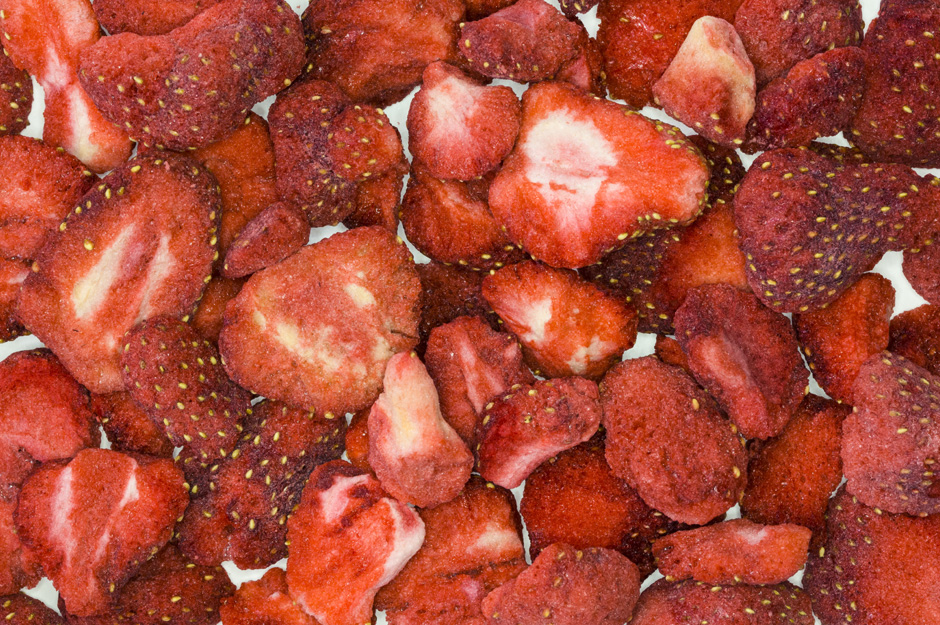
Freeze-dried strawberries, like other types of freeze-dried foods, are commonly used by astronauts, culinary masters, climbers, soldiers, explorers backpackers, and food manufacturers. Also, you can purchase freeze-dried strawberries for home use. Freeze-dried strawberries undergo the water removal process known as lyophilization, in which strawberries are frozen in a high-pressure vacuum chamber, then the temperatures gradually rise. This process makes the solid ice evaporate in a gaseous state without passing through the liquid state. Freeze-drying removes almost all moisture of strawberries without damage to their physical structure, allowing them to retain all their original flavor, color, aroma, and nutrients. Also, once the water is removed from strawberries, they become very light. The lighter weight makes for easier portability of large amounts of strawberries and cheaper transportation and delivery to consumers. By the way, freeze-dried strawberries do not require refrigeration and can be stored last for months or even years. Freeze-dried strawberries can also be rehydrated very quickly and eaten on their own or added to cereal, smoothies, salads, oatmeal, smoothies, and baked good recipes. However, the main disadvantage of freeze-dried strawberries is that they are quite expensive due to the equipment needed for this process. Although quite expensive, freeze-dried strawberries can come in quite handy because the long shelf life makes freeze-dried strawberries a viable option than fresh strawberries are not available. Most importantly, freeze-dried strawberries are made from fresh strawberries that are picked and flash-frozen at the peak of their ripeness, trapping in all the nutrients, vitamins, and minerals. Because freeze-drying only removes the water content, dried strawberries retain nearly all of their original nutrients for a longer period.
